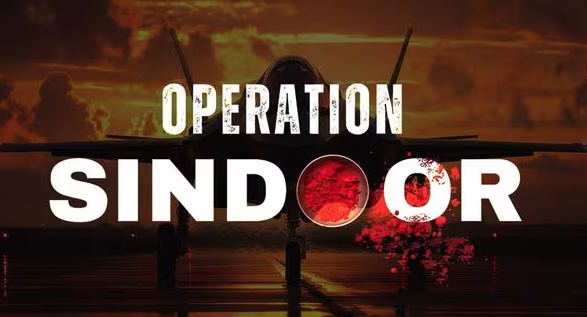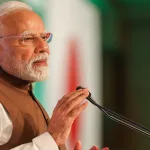Operation Sindoor launched as India’s retaliation to the perpetrators of the heinous Pahalgam Massacre on 22 May 2025 carried out by Pakistan sponsored terrorists was launched by Indian Armed Forces on the night of 6th-7th May with the declared aim of measured, proportionate and non-escalatory response. Unfortunately, Pakistan rather than agreeing to disassociate itself from the cross-border terrorism decided to escalate. India was very confident of escalation dominance and hence gave a befitting reply to Pakistan’s escalation keeping an eye on the escalation control since the stated aim had been achieved on the first night itself.
Indian Armed Forces in a well-coordinated campaign brought the Pakistani Armed Forces to knee in 72 hours and forced it to beg for a ceasefire. India responded by declaring temporary cessation of fire but Op Sindoor was not called off. Op Sindoor will be studied and analysed by the students of military history & New Age Warfare with interest and curiosity. It will go down in the annals of military history as one of the swiftest military operations. The operation also has shattered many myths which had been promoted. Consequent to the success of Op Sindoor the broken myths are enumerated in the succeeding paragraphs.
Deep State is Responsible for Cross-Border Terrorism
The events of 7th May wherein the funerals of the killed terrorists were attended by the top leadership of the Pakistan Army, senior police officers, Ministers and legislators, civil servants proved to the entire world that there was no distinction between the Deep State and the civil administration and political leadership were as much part of the Deep State as the Army, ISI and the jihadis. In Pakistan the Deep State and the Islamic Republic of Pakistan were synonym.
Pak Army Leadership is Maverick, Innovative and Bold
To the contrary Pakistan military leadership was found wanting, out of ideas and over confidence. Their over confidence was shattered by the Indian Armed Forces within 48 hrs. of their ill-conceived retaliation on 7th May wherein it attacked civilian targets and failed to penetrate strong and well-coordinated air defence over the Indian territory. They lacked imagination and cohesiveness in their response.
Impenetrable Pakistan’s Air Defence
Pakistan’s Air Defence systems based primarily on the Chinese equipment were either bypassed, jammed or silenced by executing meticulously planned strikes on the night of 8th and 9th May employing Rafale jets, missiles, armed drones and loitering munitions. The 23-minute strike on the night of 8th May exposed the vulnerabilities in Pakistan’s air defence contradicting claims of the system being impenetrable.
The Nuclear Capability of Pakistan Restrains Indian Response
Ever since Pakistan became nuclear it embraced terrorism as an instrument of state policy, a low-cost option to bleed India and deter it from any cross-border adventure. However, the Indian think tank always maintained that in the context of the sub-continent there existed enough space on the escalation ladder between the two extremities of Sub Conventional War and a Nuclear War.
Indian Army demonstrated the same in Kargil in 1999, the surgical strokes after Uri and the aerial attacks by the Indian Air Force after the Pulwama terror attack by calling out the nuclear bluff of Pakistan. Yet Pakistan remained blinded and did not adhere to the adequate warnings given by India considering the nuclear arsenal as a shield against any Indian aggression.
Operation Sindoor has totally shattered the ill-conceived confidence of the Pakistani establishment and exposed its nuclear bluff to be hollow by hitting across the length and breadth of Pakistan with precision attacks and intelligence-driven operations. India displayed to the world its confidence of managing nuclear risks through calibrated and proportional responses to Pakistani escalation. Throughout Op Sindoor India maintained escalation dominance and allowed Pakistan to get “off the ramp” when it offered ceasefire.
Terrorist Infrastructure in Pakistan Is Safe
The operation neutralized about 100 terrorists many of them who were mastermind of various terror attacks in India. The terror universities being run at Bahawalpur and Murdike, HQ of the two UN banned global terror outfits JeM and LeT, proved beyond doubt India’s resolve to hit the terrorists wherever they choose to hide in Pakistan. It debunked the notion that such sites were beyond reach due to political or strategic conditions. Numerous terror facilities of JeM, LeT and HM were razed to ground.
Superiority of Chinese Equipment
Pakistan’s major war fighting inventory is of Chinese origin. Pakistan had created much hype of the invincibility of the superior Chinese equipment, that had never been tested in combat. It was their blind faith in the Chinese equipment that led them to defiance after the initial Indian strike. The myth was broken in the next 48 hours when the Indian Armed Forces decimated their Air Defence System and neutralized in the air much hyped aerial platforms including the fighter jets and drones.
Pakistan Can Rally International Support
Other than Turkiye and Azerbaijan no other Muslim country came in support of Pakistan. Even China provided only material support. India’s timely diplomatic outreach including evidence-sharing with the major Muslim countries like UAE, Saudi Arabia and Qatar further isolated Pakistan from its onetime staunch supporters.
Civilian Areas within Pakistan Provide Safe Cover To Terror Camps
The terrorists often used civilians as a shield to protect themselves or to getaway. With precise attacks on urban-adjacent areas like Murdike and Sialkot India showed that proximity to civilian areas wouldn’t shield terror infrastructure that is co-located. This challenged Pakistan’s use of civilian areas as cover for terrorist camps.
Kashmir Is The Jugular Vein Of Pakistan
The spontaneous outburst after the Pahalgam Massacre and whole hearted support to the Indian Armed Forces during Op Sindoor, a clearcut message has been given that Kashmiris are against Pak sponsored cross-border terror. Moreover, the inhuman artillery attack on the civil areas adjoining LOC has proved that Pakistan lacks sympathy for Kashmiris and its claim is superficial and hollow.
Modern Warfare Requires Large-Scale Mobilisation
Op Sindoor has showcased the New Age Warfare and the efficacy of precision weapons. The Armed Forces which have assimilated technology no longer depend on conventional resource-heavy operations. Through use of advanced technology like precision weapons, supersonic missiles, Beyond Visual Range (BVR) missiles, satellite surveillance, net-centric warfare and autonomous weapons, India was able to break the will of the enemy to fight and prevented an escalation to a conventional all-out war.
India’s Response To Terror Attacks Is Limited To LOC
Op Sindoor marked a doctrinal shift with India striking deep into Pakistan’s Punjab province (Lahore, Rawalpindi, Sialkot, Murdike, Bahawalpur, Sargodha, Rahim Yar Khan) far beyond the LOC. It set a new normal wherein India has displayed its determination to hit terror infrastructure anywhere regardless of location or political sensitivity.
India Lacks The Will For Sustained Counter Terror Ops
Despite a ceasefire on May 10, 2025, India declared Op Sindoor “ongoing” signaling India’s resolve for sustained counter-terror ops indicating long-term commitment to counter-terrorism.
Operation Sindoor has set a new normal for India’s approach to counter-terrorism. It has also shown to the world that India, in future, will employ its comprehensive national power against any threat to its sovereignty. It would employ kinetic as well as non-kinetic resources as a swift and punitive response to any terror attack having trans-border links.
(The author is Retired Army Officer; security and strategic analyst and is based in Jammu. Feedback: [email protected])








